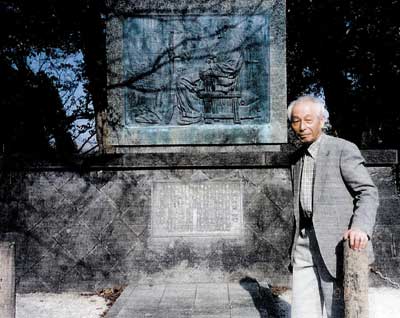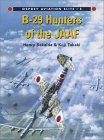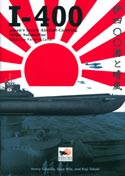Tell a Little About Yourself and Background
 I was born in 1933. When I
entered the kindergarten at age 5 in 1938, the Sino-Japanese
War
had occurred. When I was 8 years old in the 2nd grade of
the primary school in 1941, the Pacific War broke out.
When I was in the 6th grade of the primary school in 1945,
the
war ended. So to say, I was one of the children in the
wartime. There was Saeki Naval Airfield at my hometown,
which opened
in 1934. The airfield was located on the coast of Saeki
Bay near the mouth of the Bungo Straits.
I was born in 1933. When I
entered the kindergarten at age 5 in 1938, the Sino-Japanese
War
had occurred. When I was 8 years old in the 2nd grade of
the primary school in 1941, the Pacific War broke out.
When I was in the 6th grade of the primary school in 1945,
the
war ended. So to say, I was one of the children in the
wartime. There was Saeki Naval Airfield at my hometown,
which opened
in 1934. The airfield was located on the coast of Saeki
Bay near the mouth of the Bungo Straits.
I was brought
up under
the engine sounds of Navy planes as it was a base for
the Navy fighter pilot trainees on the advanced course
and
also a base of the carrier planes. I saw Claude and Zero
fighters,
Kate torpedo bombers and Val dive bombers very often.
Of course, I did not know the inside of the Saeki Kokutai
(Air Corps) at that time.
LCdr Yoshio Shiga, XO of the 343rd, became a fighter
pilot there and Saburo Sakai trained there, too. Before Pearl Harbor
in autumn in 1941, Cdr Minoru Genda, then staff air officer of
the 1st Air Fleet, flew to Saeki Airfield and first disclosed the
secret plan confidentially to squadron commanders and vice commanders
of the carrier fighter groups, including Lt Shiga who were training
there. I saw Japanese Navy aircraft at the primetime. However,
they decreased year by year.
Instead, in 1945 we saw American planes flying in
the sky over our town more often than Japanese! Recon B-29s flew
day and night. Carrier-based planes assaulted Saeki Airfield on
18 March and 13 May. B-29s bombed Saeki four times in April to
May. There was a rumor that a new type of fighter called “Shiden” could
intercept US carrier planes and B-29s. In fact, there was a great “shot-down” scene
over Saeki. It was on 7 May when Shiden-Kais shot down a B-29.
I did not see it perhaps because I was in the home shelter, foxhole.
After the Pacific War, Douglas MacArthur prohibited publishing
war memoirs and stories until the Peace Pact was signed in 1951.
It was a blank
period
of the war memories. After that, however, many books started to
be published. At that time I was busy studying before and after
entering
university.
Since I began to work in the textile industry in 1957, I read books
of war stories, especially, on the Naval aviation at leisure time.
I was
a mere reader. When Capt Genda’s memoir was published in 1962,
I was fascinated at the 343 Kokutai. Incidentally, TEIJIN LIMITED I worked
for had its main polyester fiber plant at Matsuyama. The company had
bought a wide area of the old Matsuyama Navy Airfield after the war.
The main runway was used for civilian airlines but the company’s
plants were located on the both sides. I often visited Matsuyama on business
in the 1970 to 80’s. I never forgot the old activities of the
Shiden-Kais and collected newspaper and magazine articles and books
on them. As for my family and relatives, there was none that
was involved in aviation. My father ran a dairy business and he was
designated as a
merchant who could deliver milk to the Saeki Kokutai. for the Navy pilots. They were our customers!
How Did You Become Interested in WWII
History?
An Army Tony fighter group was based temporarily at Saeki Naval Airfield
from the end of April to early May in 1945 to intercept B-29s. It
was amazing and unforgettable to me as we had not seen any interceptors
in the sky over the town. (They shot down one B-29 on 4 May 1945
over Cape Ashizuri, but all the fighters were bombed and destroyed
or damaged on the ground.) Around 1988 to 1989 I started to research
its unit and activities as I feared that the squadron’s old
surviving veterans would cease to exist. I made contact with Dr
Yasuho Izawa, the famous military aviation researcher and writer,
and could
locate the squadron commander named Maj Haruyoshi Furukawa who
was in Kyushu. I published a book, entitled Ashizuri no Umi to
Sora,” literally, “The
Sea and Sky of Ashizuri,” on the Tony squadron in 1992. (Major
Furukawa who appears in the B-29
Hunters of the JAAF is still alive
but he cannot hear me on the phone.) I kept interest in WWII aviation
but I was busy working.
Speak about your collaboration
with author Henry Sakaida?
The name of Henry Sakaida was well known here in
Japan as the author of Rabaul’s Last Zero Fighter. After he published
the above book, I wrote to him to ask him about some questions. I
first met him personally when I went to Los Angeles on business in
1996. Henry offered me to work together on his projects, in which
he had been engaged for a long time, but I could not OK at that time
as I was busy as chairman of a textile trading company, TEIJIN SHOJI.
I had to have him wait until my age-limit retirement. I retired in
1997. However, 343 Ku was a big theme and it took some more time
for me to determine to work with him on the big project.
Talk about the process of writing your
books
 Henry
Sakaida took the initiative in both B-29
Hunters of the JAAF. Without his long-cherished planning and preparations,
the two books could not exist. I only helped him write B-29 Hunters.
Really,
I was very busy thinking about Shiden-Kais on one hand and checking
his draft of B-29 Hunters on the other! In addition, I translated
Chester Marshall’s book Sky Giants Over Japan through
Henry’s
introduction. It was published here in May 2001 a half year before
B-29 Hunters.
Henry
Sakaida took the initiative in both B-29
Hunters of the JAAF. Without his long-cherished planning and preparations,
the two books could not exist. I only helped him write B-29 Hunters.
Really,
I was very busy thinking about Shiden-Kais on one hand and checking
his draft of B-29 Hunters on the other! In addition, I translated
Chester Marshall’s book Sky Giants Over Japan through
Henry’s
introduction. It was published here in May 2001 a half year before
B-29 Hunters.
Tell about your bilingual capabilities as
an author
You may wonder to hear that I cannot speak English
fluently. I cannot follow you speaking. It is easier for me to write
English than speaking. (But it takes time for me to write it, of course.)
Without a native English-speaking collaborator like Henry I cannot
be an author of a book in English. I can write a draft but it must
be refined so that it may be readable. In general, Japanese WWII historians
who have good books do not write in English. It is regrettable that
good war books in Japanese are unknown to English-speaking readers.
Speak about Your Work on the Genda's Blade book
 Henry had made contact with some important
veterans long, long ago about 20 years before. 343 Ku veterans did
not task us anything.
They kindly helped us, though they did not know when the book would
be completed. In particular, LCdr Yoshio Shiga was very much helpful
to him and me afterwards. Yes, we were attracted by the SHIDEN-KAI
fighter and activities of the 343rd and the personalities of the
unit.
Henry had made contact with some important
veterans long, long ago about 20 years before. 343 Ku veterans did
not task us anything.
They kindly helped us, though they did not know when the book would
be completed. In particular, LCdr Yoshio Shiga was very much helpful
to him and me afterwards. Yes, we were attracted by the SHIDEN-KAI
fighter and activities of the 343rd and the personalities of the
unit.
Genda’s Blade Japanese version i(hard cover, A5 size
in the Japanese standard, far smaller than the size of the English
edition but a little
larger than usual books here, 600 pages, 240 photos without color profiles
and line drawings) was published by Neko Publishing, Tokyo, on 15 August
2003. It is a thick book and the cover with a line drawing by Shigeru
Nohara is beautiful. It is priced at Yen 4,300, cheaper than the English
edition but higher than usual books. Dr Yasuho Izawa, the co-author
of “Japanese Naval Aces and Fighter Units in WWII”,
says, “Striking!”
 Tell about your role in the I-400 Book
Tell about your role in the I-400 Book
The new book on the I-400 and attack plane Aichi
M6A1 "Seiran" has been completed by the zeal and enthusiasm of the two other co-authors, Henry Sakaida and Gary Nila. Perhaps, you can notice it from the introduction, “History in a Cardboard Box.” They had started to work and “invest” on the project while I was still writing “Genda’s Blade” in Japanese. So I was very much busy catching them up and co-authoring. Frankly speaking, however, I was not able to do utmost to help them.
Unfortunately, my wife Shuko was suffering from breast cancer and repeating hospitalization in the period of our writing and finally she passed away several months after Henry and I finished our rough draft. I had to leave all of the refining work and proofreading to the other co-authors as I had things to do after my wife’s death and it took time for me to recover from the shock. Therefore, I must say, all the merits of the book, if you find them, should be attributed to Henry and Gary.
On this occasion I must add that all the Seiran line drawings in the book are by Shigeru Nohara and all the Seiran photos appearing there are by his courtesy, too. Shigeru Nohara’s contribution should aave been more conspicuously mentioned. He is known as a line drawing artist of renown and researcher and author of aircraft and aviation before and during WWII as well as jet planes after the war. If a Japanese publisher is interested in the Japanese version of the I-400 book, I will work on the project. As mentioned in the book, the story is not always new to the readers here, except various episodes after the end of the war, told by Henry Sakaida and Gary Nila.
What future projects are you working
on?
One veteran recon seaplane pilot from the Saeki Kokutai has requested me for long to write (in Japanese, of course) about the activities of one unit of the E13A Jake. They were engaged in patrol missions over the Bungo Straits during the 1944-45 period and also flew over the sea at Okinawa in 1945, based at Ibusuki Seaplane Station as an advance base in Southern Kyushu, losing many planes and aircrews. 14 Jakes also flew on forward patrol against U.S. submarines when Yamato made sortie on 6 April 1945. U.S. subs saw the Yamato going out of the straits but they failed to launch torpedoes and had to send off the fleet because of the patrol planes flying low on the sea. One Jake was missing on 14 April. Lt(jg) Masae Yao is said to have killed himself or shot to death when the plane made forced landing on the sea and a U.S. sub surfaced. It seems that two of the aircrew, possibly petty officers, were captured. One Jake was shot down by a Dumbo B-29 in the Bungo Straits when the aircrew was going to attack a submarine on 5 May 1945. (On the day B-29s raided the Kure Naval Arsenal.) Two, the pilot and gunner, were killed when the plane crashed, but Lt Masayoshi Kojima, reconnoiter and A/C, was picked up by the submarine and captured while he was unconscious, being taken to Hawaii and then the United States. Without knowing it, a Navy funeral for the three KIA was served at the Saeki Kokutai. Kojima came home safely after the war and ceased his naval career as R/Adm of the JSDMF. There are various episodes. However, most of the surviving officers were dead now and it is difficult to hear about their experiences personally. Moreover, I have not been recovered yet from the shock of my wife’s death and feel tired. I want to have a rest for the time being. I have many books to read, too.
Thank you Mr. Takaki for the interview
Koji Takai's books B-29
Hunters | Genda's
Blade | I-400 Japan's Secret Aircraft-Carrying Strike Submarine: Objective Panama Canal